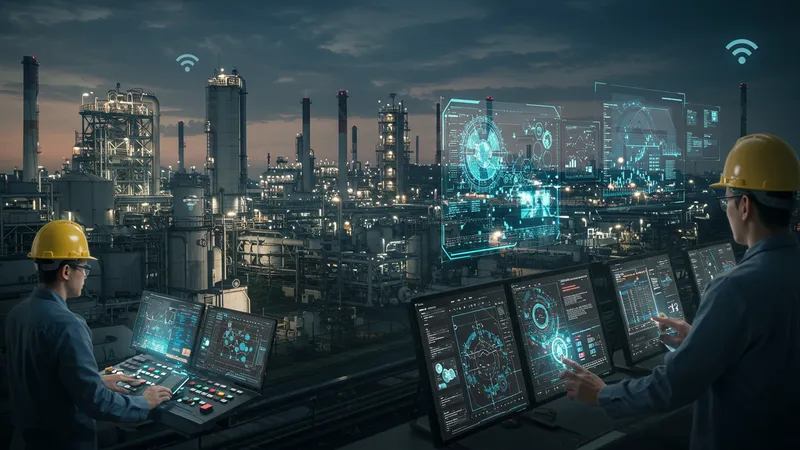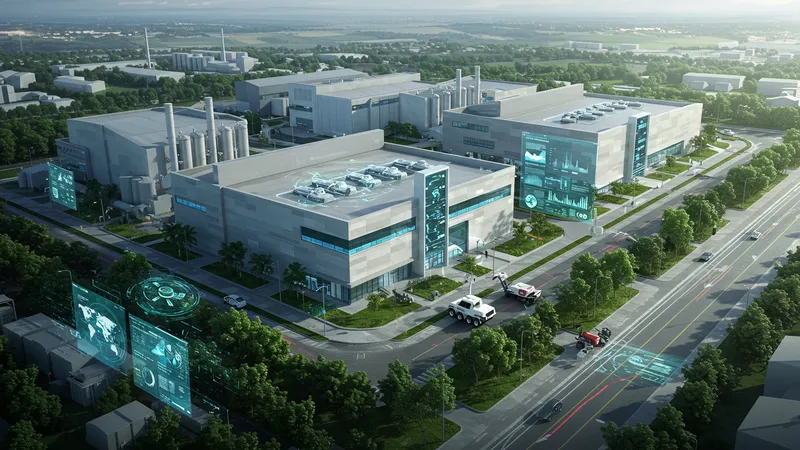

End-to-end industrial park development and management solutions refer to integrated services that oversee every phase in creating, operating, and maintaining industrial parks. This means combining site selection, design, construction, infrastructure provision, tenant management, facility maintenance, regulatory compliance, and implementing smart technologies—all under one umbrella. The goal is seamless coordination, improving both efficiency and long-term value for investors, tenants, and local governments.
Instead of fragmented approaches where each phase is contracted separately, end-to-end solutions transform the development and operation into a cohesive, streamlined process. This not only helps avoid costly missteps and project delays but provides a single-point-of-contact, scalable frameworks, and faster adaptation to shifting economic landscapes. Diverse stakeholders, from manufacturing companies to tech-driven logistics firms, are increasingly recognizing the benefits of an integrated approach.

Many developers note that integrated industrial park solutions reduce the risk of misalignment between planning, construction, and operational needs. By leveraging a single provider who brings together all stakeholders, projects often see faster delivery timelines and optimized infrastructure costs compared to traditional multi-vendor models. This integrated perspective also enables more resilient business cases and greater agility in responding to market changes.
Another major strength is that end-to-end solutions leverage extensive data analytics and property technology platforms. Providers such as Prologis embed smart systems for monitoring energy, water usage, and security, thus maximizing operational efficiency and environmental performance. These digital features attract both global manufacturers and logistics providers seeking reliable, future-proof industrial real estate.
Financially, while upfront advisory or management fees for end-to-end services can be significant, studies consistently highlight that such investments translate to lower lifecycle costs. Avoidance of construction delays, tenant turn-over, and infrastructure retrofits can mean substantial savings over time. Additionally, parks that leverage these holistic models often command higher occupancy rates and stronger tenant retention.
Industrial parks built and managed through cohesive solutions frequently drive local economic growth and sustainability. Providers with global footprints, like CBRE or JLL, ensure regulatory compliance, facilitate multi-sector tenant mix, and implement ESG (Environmental, Social, Governance) strategies tailored to evolving stakeholder expectations. Their frameworks set benchmarks within the industrial sector for collaborative growth and asset performance.
In summary, end-to-end industrial park development and management solutions are reshaping how modern industrial real estate evolves—from land identification to operating smart, sustainable industrial spaces. What are the crucial design principles? Which innovations are driving this transformation? The deeper details reveal even more valuable insights ahead…
The integration seen in leading end-to-end industrial park development starts with comprehensive site selection and tailored master planning. Providers like JLL analyze regional logistics networks, local workforce availability, and proximity to commercial centers to maximize a park’s strategic value. This early-phase intelligence underpins everything that follows, ensuring parks are positioned for long-term growth and adaptive reuse.

Another critical component is the alignment of infrastructure delivery. Full-service providers coordinate with public utilities and private contractors to ensure essential services—power, water, transportation links—are delivered on time and at appropriate capacity. This minimizes operational bottlenecks for future tenants, setting an enhanced standard over segmented, multi-phase park builds.
Tenant acquisition is strategically woven into the development process. Companies like CBRE deploy specialist teams to market the industrial park to global manufacturers and e-commerce players, aligning park capacities with real-world industry demand. Advanced digital marketing and virtual tour options are becoming standard, accelerating occupancy and reducing vacancy risks.
Finally, sustainability and ESG integration are crucial. Prologis, for instance, employs green building standards, renewable energy integration, and intelligent monitoring systems. This proactive focus not only appeals to multinational tenants seeking responsible supply chain operations but also aligns with regulatory and investor demands for sustainable industrial assets.
Smart technology adoption is a pivotal driver in the evolution of end-to-end industrial park management. Market leaders embed Internet of Things (IoT) sensors and cloud-based control platforms across facilities, allowing real-time monitoring of environmental conditions, energy usage, and security. This digital infrastructure enhances not only operational uptime but also enables predictive maintenance, minimizing costly breakdowns.

Prologis and similar providers implement digital twin technology, which creates real-time, virtual replicas of industrial assets. These digital environments allow stakeholders to track inventory, plan expansions, and simulate operational changes before making physical adjustments. The results foster improved decision-making and leaner, more resilient park operations.
Another technological leap comes from advanced facility access control and visitor management solutions. Integrated systems with facial recognition and mobile-enabled entry streamline logistics, bolster on-site security, and reduce administrative overhead. These smart features differentiate end-to-end managed parks from legacy models and support scalable tenant growth.
Analytics platforms also enable benchmarking and continuous improvement. Data generated by park-wide systems pinpoint inefficiencies, optimize resource allocation, and drive sustainability projects. These capabilities make end-to-end solutions not just about building spaces, but about delivering continuously improving business environments for industrial tenants.
Developers leveraging end-to-end solutions report improved project delivery timelines. By combining all phases and providing a single point of accountability, delays are minimized and conflicts between sub-contractors are reduced. Clients frequently cite the advantage of lower change-order costs and a clearer pathway to operational readiness, which is difficult to replicate with fragmented approaches.

For tenants, integrated park management means enhanced facility longevity and a smoother onboarding process. Providers like CBRE support tenants with on-demand facility services, customized fit-outs, and ongoing property management. This tenant-focused model reduces business disruption and fosters stable, long-term occupancies.
Investors are increasingly attracted to industrial parks that utilize end-to-end development and management due to improved risk mitigation and asset quality. These parks often experience higher valuation trajectories, as streamlined operations and lower ongoing maintenance needs strengthen net operating income. This, in turn, supports robust asset-backed investment portfolios.
Communities and public sector partners also realize benefits. Smart, well-managed parks provide employment, support regional supply chains, and meet evolving sustainability targets. Successful parks developed under end-to-end frameworks demonstrate replicable best practices, building industry reputations while supporting inclusive economic development.
Despite the clear advantages, end-to-end industrial park development solutions face hurdles such as evolving regulatory landscapes, escalating land costs, and technological complexity. Providers must remain agile, continuously updating their frameworks to align with the latest legal, environmental, and market requirements. This ongoing adaptation adds value but requires deep expertise across many fields.

The convergence of artificial intelligence and automation holds promise for future park management. As AI-powered predictive tools become more accessible, issues ranging from tenant churn forecasting to infrastructure stress tests can be performed with greater precision. Market leaders are already piloting AI-driven maintenance routines and adaptive resource optimization to enhance park performance further.
Another challenge is aligning diverse tenant requirements within a single scalable framework. Industrial parks are serving a broader range of industries—from logistics and manufacturing to tech start-ups and data centers. End-to-end providers must design adaptable spaces, robust utility provisions, and customizable services to support this diversity without sacrificing operational efficiency.
Looking ahead, the most successful end-to-end solutions will prioritize sustainability, digital integration, and tenant-centric customization. Providers that invest in continual improvement, collaborative partnerships, and transparent management models are best positioned to lead the next wave of industrial park innovation—ensuring these sprawling complexes evolve into dynamic, future-ready hubs for global commerce.